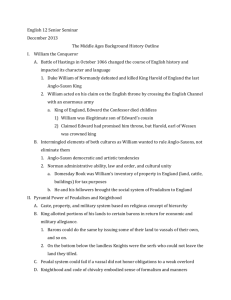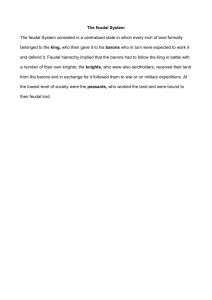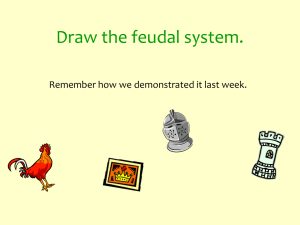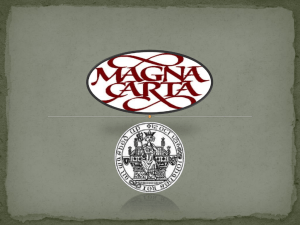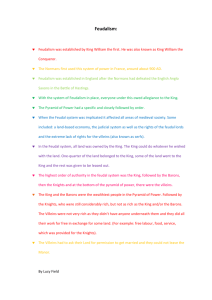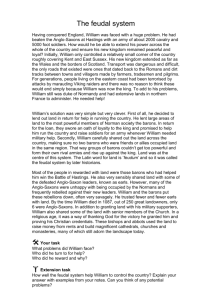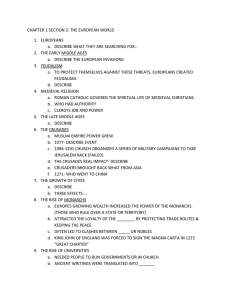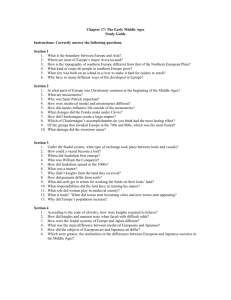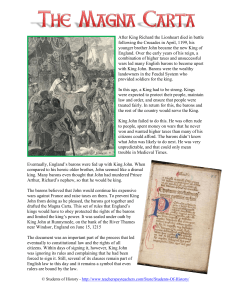The Medieval Period 1066-1485
advertisement
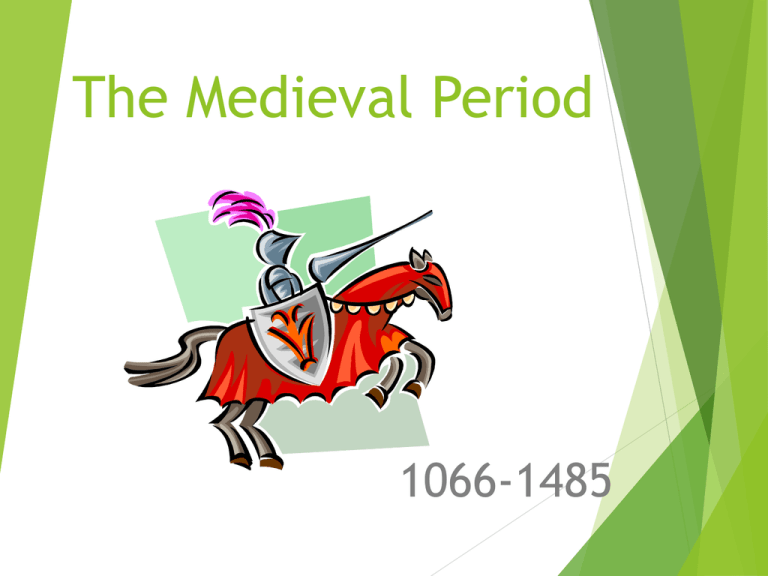
The Medieval Period 1066-1485 In the beginning…. The Normans invade England in 1066. William the Conqueror takes the crown. He brings Feudalism to England Feudalism: Political and economic system in which the king owned all of the land in the kingdom William gave ¼ of land to himself, ¼ to the church, and the rest to loyal nobles (barons) Barons give William warriors called knights Barons swear their allegiance to the king, knights swear their allegiance to the barons, etc. Defeated Anglo-Saxons are reduced to serfs (peasants), bound to the land Then… William’s successors were less organized than he was, which resulted in barons fighting for land and power. In 1154, Henry II takes over the crown He is one of England’s most memorable rulers Reformed the judicial system—instituted royal courts and initiated the formation of English Common Law. His wife, Eleanor of Aquitaine, brought the Code of Chivalry with her from France. Code of Chivalry Code by which knights lived by The ideal knight respected and defended the church, his king, his country, and stood up to injustice The qualities of a knight included: Faith, modesty, loyalty, courtesy, bravery and honor To honor and respect women To go on quests, like the Crusades Successors Richard the Lion-Hearted Fights in the Crusades John (Richard’s brother) Signs Magna Carta in 1215 John’s son, Henry III Limits the funds royalty can spend and gives more authority into the hands of barons Created an advisory council of barons that met regularly. Edward I Established the inclusion of commoners (House of Commons) as well as barons (House of Lords) in the council. (Parliament) Decline of Feudalism Medieval towns begin to grow, which leads to a decline of feudalism since wealth was no longer based on land ownership. Commoners are now getting more and more power. The flipside to this is that the growth of towns meant crowding and poor living conditions which resulted in disease. Strife in England Black Death killed one third of England’s population 1.5 million killed between 1348-1350 Peasants’ Revolt of 1381 Abdication of Richard II Supporter of Chaucer (Canterbury Tales) Wars of the Roses Civil War between the House of Lancaster and the House of York over the rightful heir to the throne Medieval Literature Romance emerges – imaginative adventure story concerned with noble heroes, gallant love, chivalric code of honor, and daring deeds Idealized world of castles, heroes, courtly love, and spells This countered the real world of plagues, battles, and civil unrest Religious faith was a vital element of the literature of the time period King Arthur and the Knights of the Round Table become the medieval heroes Sir Gawain and the Green Knight Author is anonymous Written c. 1400 in Middle English (language spoken after the Norman invaston of 1066 thru 15th century) Important because: Alliterative poetry Epic poem Medieval romance
